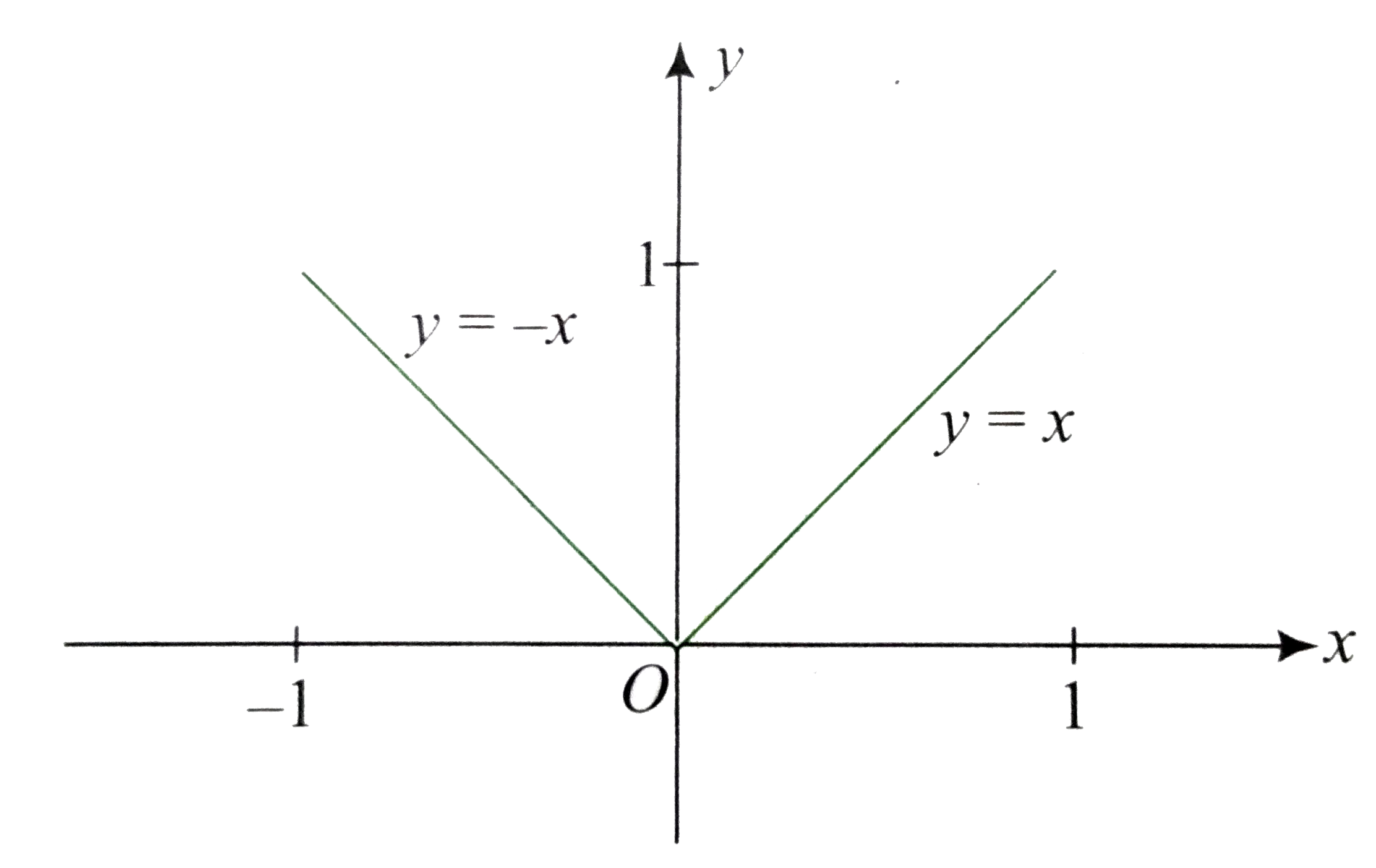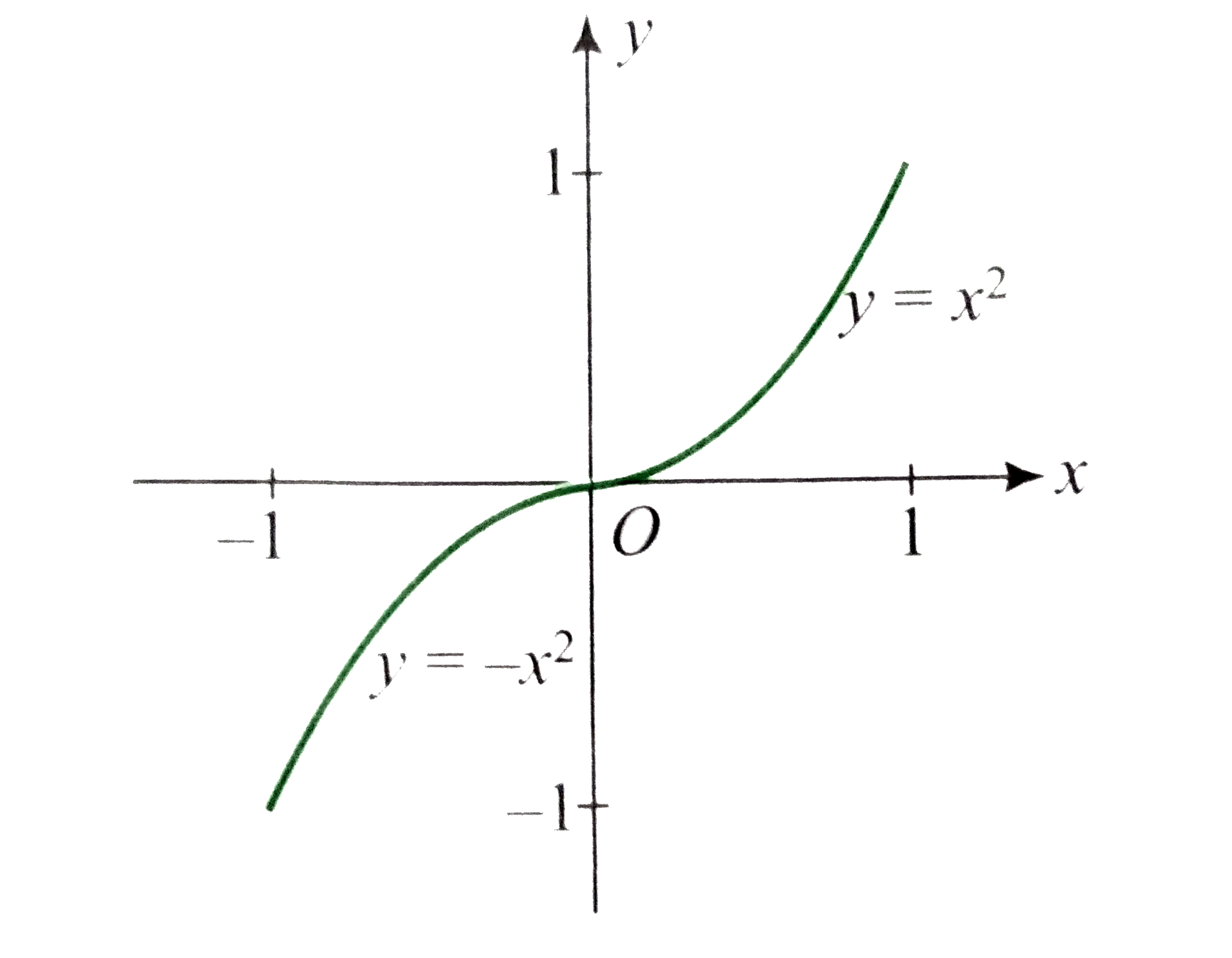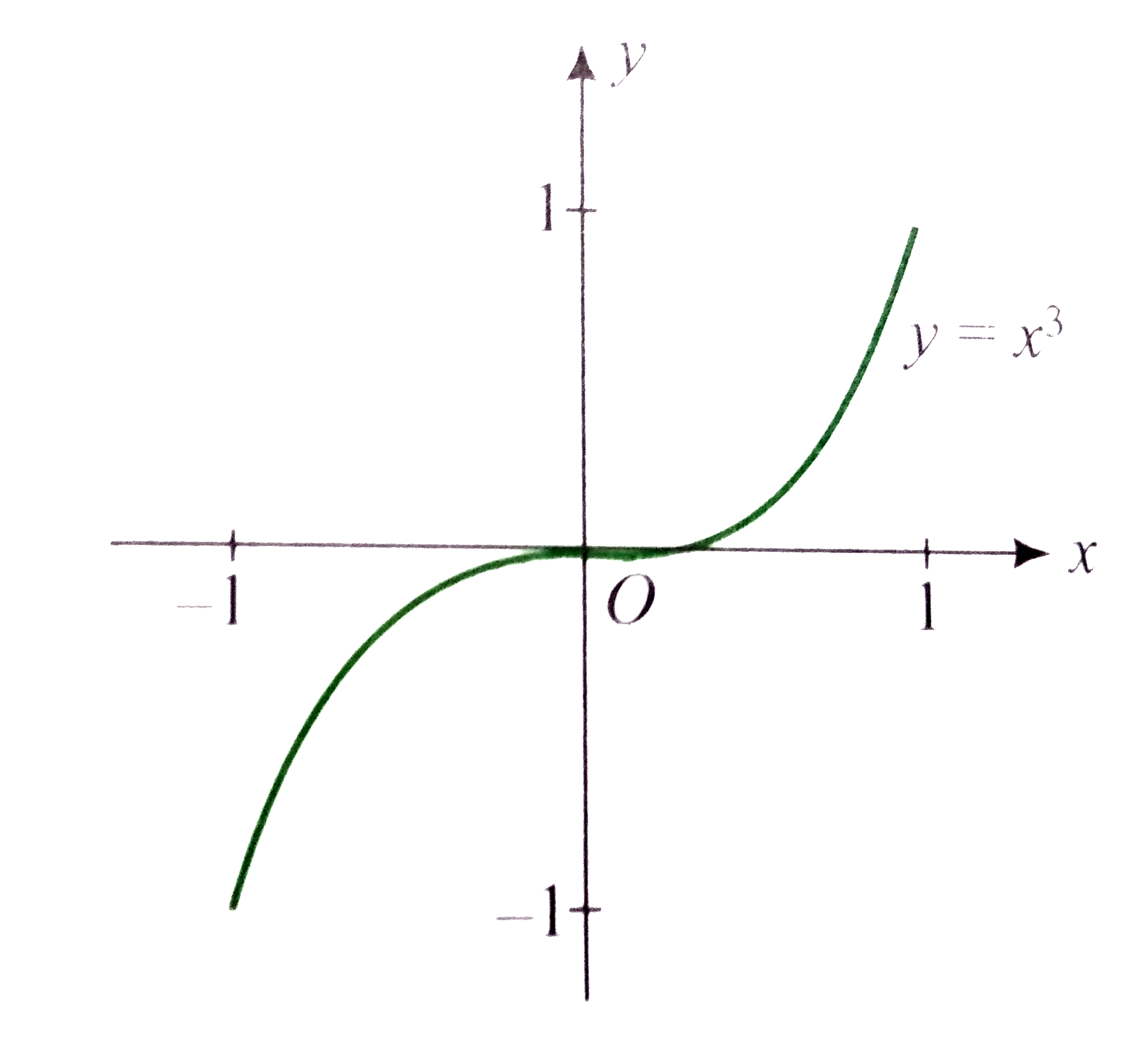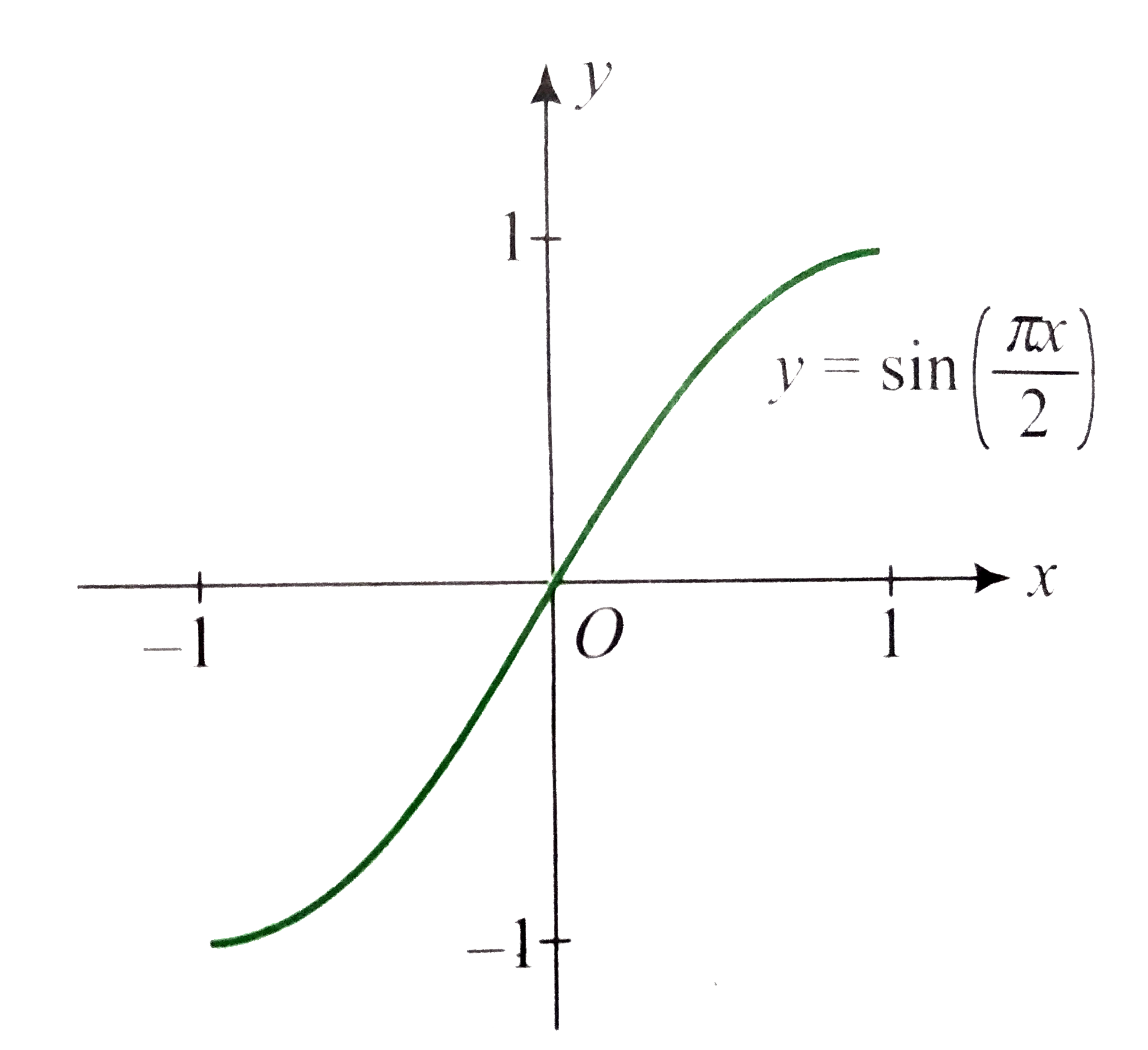Let be a function Then find the nature of each of the following functions.
(i)
(iii)
(i) .
Graph of the function is as shown in the following figure.

From the graph we observe that f(x) is many-one.
Also, we observe that the range is . Hence f(x) is into.
(ii) where
Now

From the graph we observe that f(x) is one-one as there is no horizontal line which intersect the curve more than once.
Also, we observe that the range is . Hence f(x) is onto.
Thus f(x) is bijective.
(iii)

Clearly, f(x) is one-one.
Also, for
So, f(x) is onto.
Thus, f(x) is bijective.
(iv)
For
So, graph of f(x) is as shown in the following figure.

From the graph we observe that f(x) is one-one.
Also, range of the f(x) is Hence f(x) is onto.
Thus, f(x) is bijective.
Topper's Solved these Questions
- BOOK - CENGAGECHAPTER - RELATIONS AND FUNCTIONSEXERCISE - Exercise 1.115videos
RELATIONS AND FUNCTIONS
- BOOK - CENGAGECHAPTER - RELATIONS AND FUNCTIONSEXERCISE - Exercise 1.25videos
RELATIONS AND FUNCTIONS
- BOOK - CENGAGECHAPTER - Quadratic Equations, Inequalities, Modulus and LogarithmsEXERCISE - Question Bank31videos
Quadratic Equations, Inequalities, Modulus and Logarithms
- BOOK - CENGAGECHAPTER - SCALER TRIPLE PRODUCTS EXERCISE - DPP 2.311videos
SCALER TRIPLE PRODUCTS
Similar Questions
Knowledge Check
- Question 1 - Select One
The function f(x)=cosx,0≤x≤π is
AdecreasingBincreasingCneither increasing nor decreasingDincreasing for 0≤x≤π
Find the domain of each of the following functions:
(i) f(x)=sin−1x2
(ii) f(x)=sin−1x+sinxView SolutionFind the domain and range of the following functions:
(i) f(x)=√(x−1)(3−x)
(ii) f(x)=11−7sinx
(iii) f(x)=1−|x|View SolutionFind the range of the following functions
(i) f(x)=log2(√x−4+√6−x),4≤x≤6
(ii) f(x)=9x−3x+1View SolutionFind the intervals of monotonicity of the following functions.
(i)f(x)=−x3+6x2−gx−2
(ii)f(x)=x+1x+1
(iii) f(x)=x.ex−x2
(iv) f(x)=x−cosxView SolutionFind the domain of each of the following functions given by f(x)=1√|x|−x
View SolutionFind the points of local maximinima of following functions
(i)f(x)=(2'−1)(2'−2)2 (ii)f(x)=−(x−1)3(x+1)2
(iii)f(x)=xenxView SolutionIf f(x) is a real valued function, then which of the following is injective function ?
(i) f(x)=x5 (ii) f(x)=x+sinx
(iii) f(x)=x2 (iv) f(x)=ex
(v) f(x)=x3+x2+4x+4View Solution

